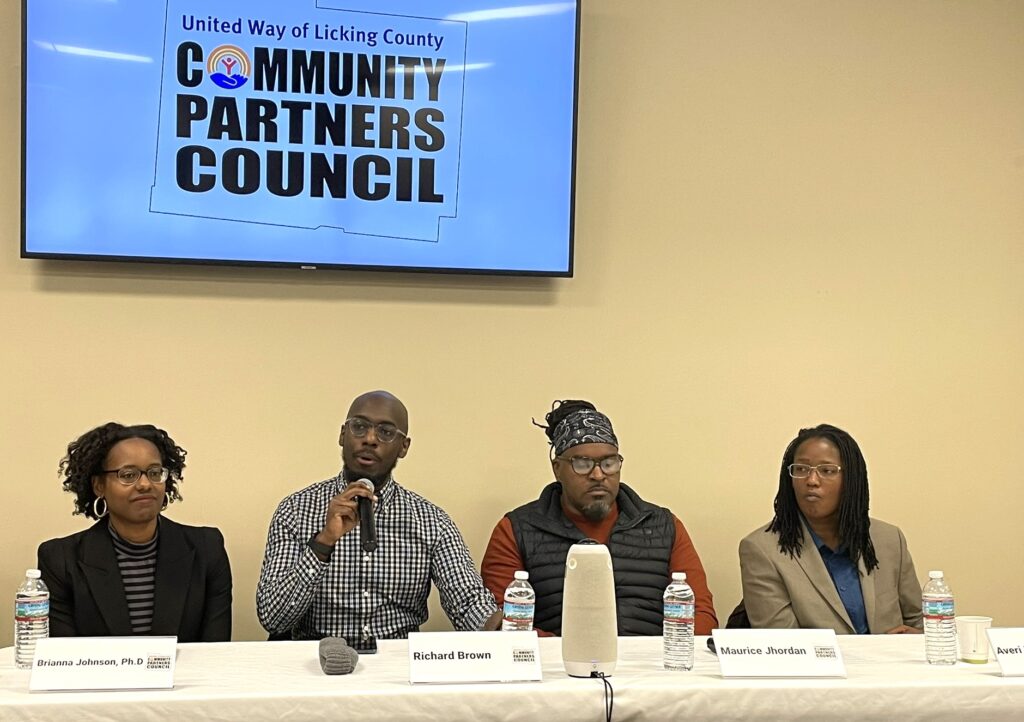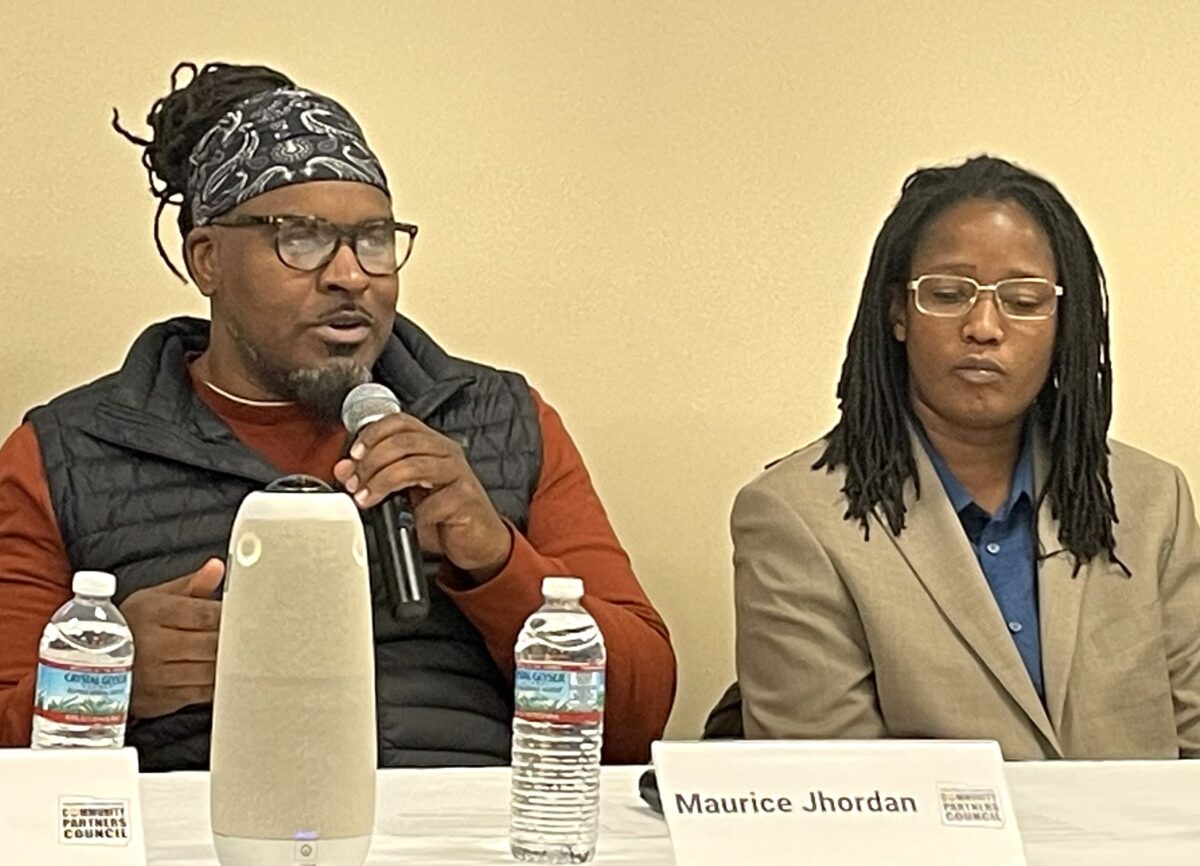In a world where stereotypes and misinformation help shape perceptions about the meaning of “diversity, equity and inclusion,” four experts spoke Wednesday, Jan. 10, in Newark about the value of inclusiveness and the barriers to opportunities for all to be successful.
On a personal level, they said, no one – no matter their race, gender or culture – wants to feel excluded or “othered.” Such feelings have a host of negative effects for the individual and society, the experts said during a panel discussion hosted by the United Way of Licking County at the Licking County Aging Partners center on East Main Street.
“Anyone can think of a time when they felt left out,” said Maurice “Rese” Jhordan, a middle school teacher in Newark City Schools, a real estate agent and musician. “We have to elicit that person’s empathy. We have to go out of our way to connect with others.”
And there is a business case for equity and inclusion, said Averi Frost, executive director of the Central Ohio African American Chamber of Commerce.
“With all of the development in Licking County, your economy has just changed,” she said. “How are you helping promote those opportunities?”

One way to explain the need for and value of diversity, equity and inclusion (DEI) is by looking at hard facts – data rather than preconceived notions, said Richard Brown, associate dean of students and director of the Center for Belonging and Inclusion at Denison University.
Licking County’s population of 178,519 in the last census was a 7.2% increase from 2010, making it the state’s 17th largest county, according to U.S. Census data quoted in an Advocate story about the county’s increasing diversity. The county’s white population decreased by 1,107 residents, while the minority population more than doubled from 11,300 in 2010, to 24,449 in 2020.
“Our world is becoming more diverse – every part of our life,” Brown said. “We as individuals and organizations can only benefit from learning to navigate this.”
Frost and Jhordan echoed that thought.
“Some people say Licking County isn’t diverse; it’s incredibly diverse,” Frost said, not only in race but also in gender, culture, religion and socio-economic diversity.
“We love diversity” in Licking County, Jhordan said. “When a new restaurant opens here, it’s a big deal! We have a Bojangles (fried chicken and biscuits) now, so we just closed the gap right there,” he said to laughter from the audience.
Meaningful progress, Jhordan said, requires that people “break through stereotypes, challenge them and sometimes smash them, and then rebuild from there. We have to let everybody know the value that is to you. Incentives and consequences are valuable when they change behavior.”
In the increasingly diverse community of Licking County, the panelists said the biggest barriers to understanding the value of equity and inclusion are fear and polarization.
And in a world where stereotypes and misinformation help shape perceptions about the meaning of DEI, the panelists talked about how individuals and organizations can work to overcome stereotypes and break down the barriers that keep people from understanding one another.
“With hyper-polarization – and COVID and social media have made it worse – people feel threatened,” Frost said. “We see people going further and further into corners, and even starting their own social media platforms to go further into their corner.”
That helps breed fear, said Brianna Davis Johnson, chief diversity officer and director of the Office of Diversity, Equity and Inclusion at Ohio State University at Newark and Central Ohio Technical College.
“Fear of loss of power, fear of a loss of resources and fear of the unknown,” she explained. “When we get to know people with different life experiences, we find there are a lot more similarities than differences.”
Brown said people need to get beyond the notion that “if they get something, I’m getting less.”
When it comes to resources, there are plenty for everyone, he said, but the opportunities are not always available to everyone.
Jhordan added that “we have to be honest about what’s going on here and why we need DEI in the first place. Something had to happen. People were held back for a long time, and those things have effects on our society today.”
Brown said it’s up to everyone to educate themselves about that history, to be discerning about the news we consume and “not just run with inflammatory headlines without reading the stories that go with them,” and to not sit back and think that equity and inclusion should be implemented by others “because it’s her job, or I’m not Black, or I’m rich” and it doesn’t affect me.
“We have to resist the notion that it’s someone else’s job – that when we see a house on fire that we think someone else is going to call the fire department,” Brown said.
Alan Miller writes for TheReportingProject.org, the nonprofit news organization of Denison University’s Journalism program, which is sponsored in part by the Mellon Foundation and donations from readers. Sign up for The Reporting Project newsletter here.

